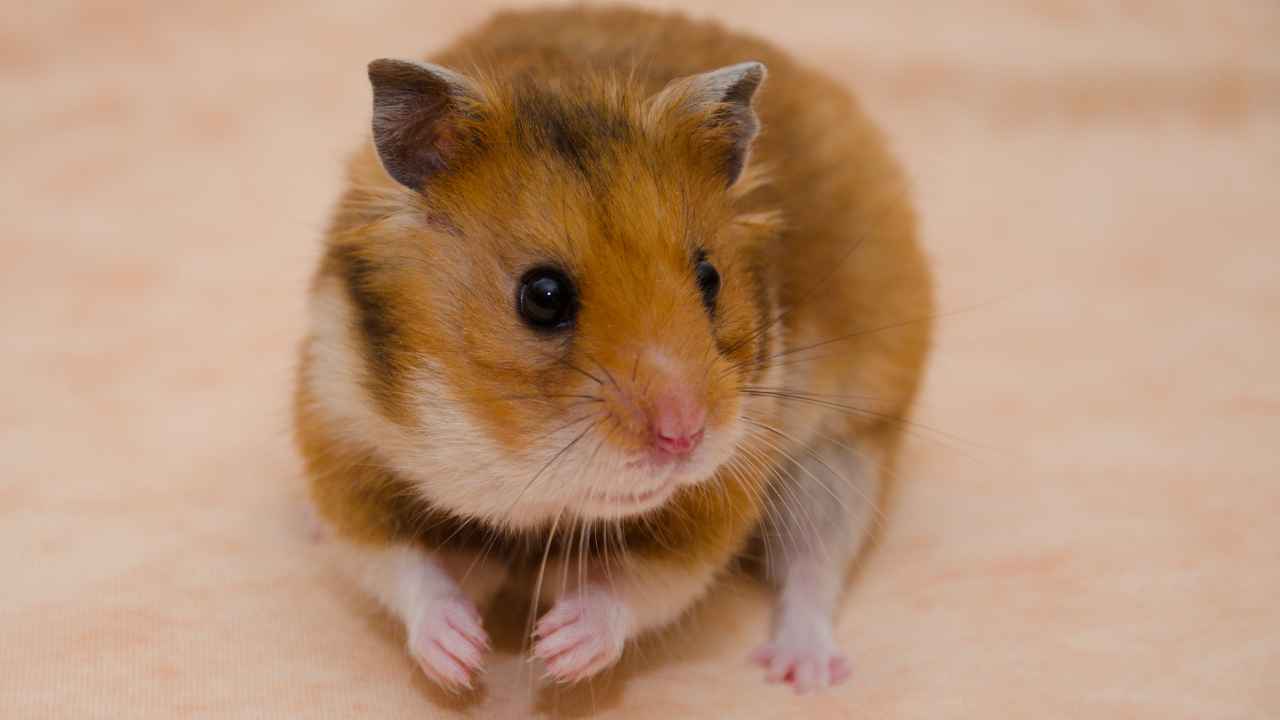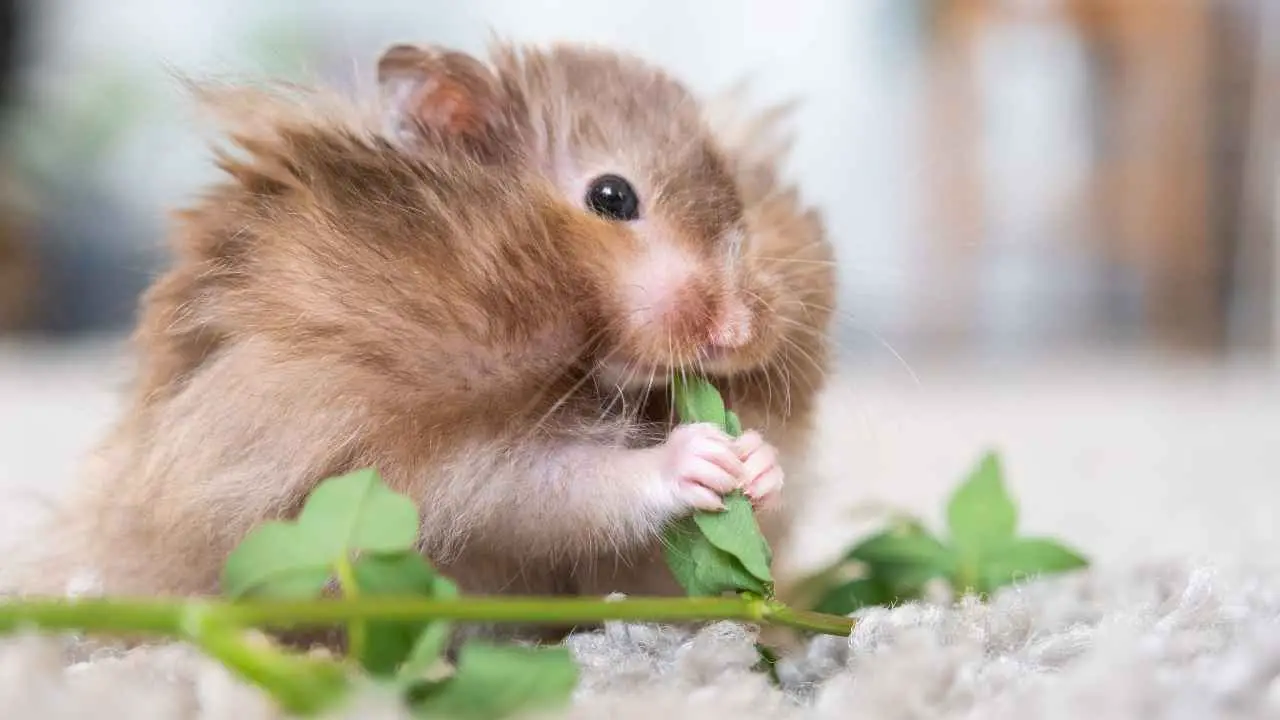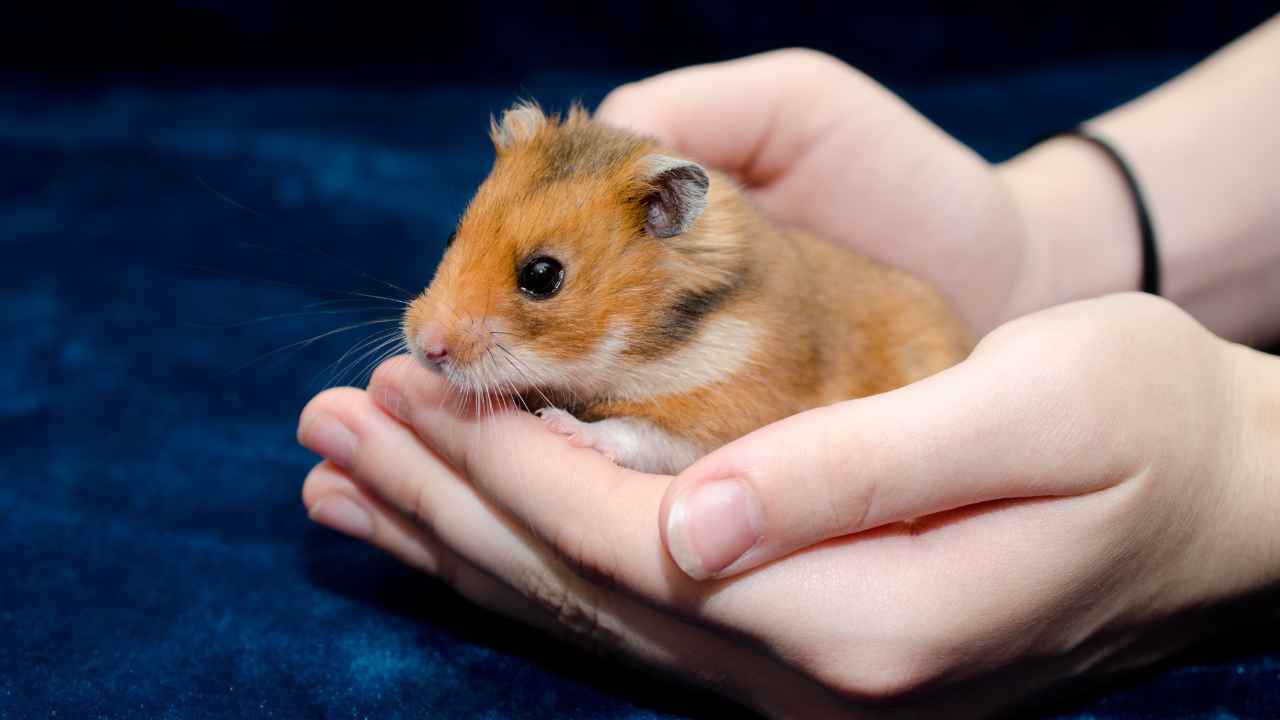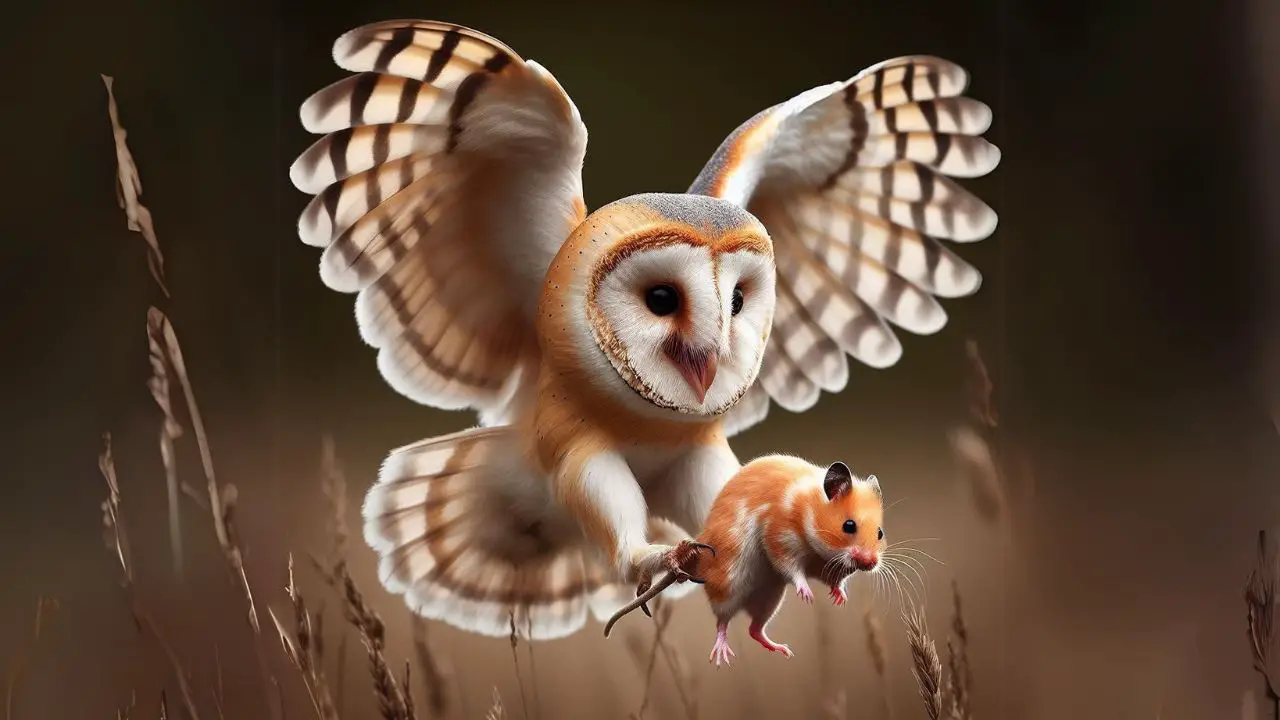Teddy bear hamster, the golden hamster, or Syrian hamster is a rodent naturally found in a small region of northern Syria and southern Turkey. Because of their docile nature, cute appearance, and low maintenance, teddy bear hamsters are one of the most favored choices for small pets. It is also one of the mostly used scientific research animals to model various human medical conditions. Here, we have gathered information about teddy bear hamster characteristics, habitat, diet, behavior, reproduction, and more.
Teddy Bear Hamster Facts For Kids
What is a Teddy Bear Hamster?

Teddy bear hamster, commonly known as the golden hamster or Syrian hamster, is a rodent of the hamster subfamily Cricetinae. Its natural habitat is restricted to a small arid region of the Middle East. Their wild population has seriously declined due to habitat loss and deliberate elimination by humans. Their current conservation status on the IUCN Red List is Endangered. However, their captive breeding programs are well-established and prevent them from endangerment. Captive-bred teddy bear hamsters are kept as small house pets and research animals everywhere in the world.
Scientific Classification
- Domain: Eukaryota
- Kingdom: Animalia
- Phylum: Chordata
- Subphylum: Vertebrata
- Class: Mammalia
- Order: Rodentia
- Family: Cricetidae
- Subfamily: Cricetinae
- Genus: Mesocricetus
- Species: Mesocricetus auratus
Physical characteristics
What do teddy bear hamsters look like?

Like many other hamsters, a teddy bear hamster or golden hamster has a sturdy body and short stocky legs. They have small wide feet with sharp claws, well-adapted for burrowing. They have small heads with a blunt snout, small eyes relative to its head, and large furry ears.
They either have a solid coat color (black, dark gray, brown, or golden) or a combination of colors like golden-brown on the upper side fading to white or gray on the under side. Some individuals also have brown coat colors with white bands or golden with white splotches. Some also have a dark patch on the forehead and a black strip on both sides of the face running to the neck. They have a short tail, usually 1.5 cm long.
Like many other hamsters, teddy bear hamsters have cheek pouches extending from their cheeks to shoulders. Wild hamsters are larder hoarders and use their cheek pouches to carry food to their burrows.
How big is a teddy bear hamster?
The average body length of teddy bear hamsters ranges from 13 to 13.5 cm (5.12 to 5.31 inches). Their body length can reach a maximum of 18 cm (7.1 inches).
Their average body weight ranges from 100 to 125 grams (3.52 to 4.41 oz). Captive bred individuals can weigh from 175 to 225 grams (6.2 to 7.9 oz).
Teddy bear hamsters have sexual dimorphism, and females are usually larger in size and weight than males.
Where Do Teddy Bear Hamsters Live – Teddy Bear Hamsters Habitat

The natural habitat range of teddy bear hamsters or golden hamsters is confined to a small region in the Middle East. Most of their habitat range lies within the Aleppenian plateau in Syria and some arid areas in southern Turkey. In captivity, they are found worldwide as pets and research animals.
Their natural habitat region has seasonal climate, with hot summer days and cold summer nights, cold and wet winters, and generally low precipitation (about 336 mm per year).
Wild teddy bear hamsters make underground burrows to stay cool and safe from predators. They prefer agricultural sites for burrows near irrigation wells. Their current wild population is extremely low, and their conservation status is Endangered.
What Do Teddy Bear Hamsters Eat – Teddy Bear Hamsters Diet

Teddy bear hamsters are omnivore and eat plants, vegetables, fruits, grains, seeds, nuts, and insects (ants, flies, cockroaches, and wasps) in the wild.
In captivity, they are feed with commercial hamster food mix formulated according to their basic nutritional needs. This food has a variety of grains, seeds, and pellets.
In addition to the staple food of commercial food mix, you should also give them some fresh vegetables and fruits. The best vegetables to offer them are carrot, lettuce, and spinach. The fruits they like are apples and grapes.
If you want to give a special meal to your teddy bear hamster, you can give him a small amount of nuts, fresh grains, and timothy hay. Nuts (peanuts and almonds) in large amounts should be avoided, because they are rich in calories and are not good for a hamster’s health.
Teddy Bear Hamsters Behaviour

Teddy bear hamsters are solitary and very territorial. They are very aggressive towards each other, except when mating. Even after mating, the females may attack males. They mark their burrows and territory with the scent of a special gland on their hips, known as flank gland. They rub their sides along objects to spread their scent and mark territory. From the flank marking, they can even recognize the kin of individuals.
In captivity, pups are separated from their mother. When they become four weeks old, siblings of different sex are separated, and only the same-sex siblings are kept together. They are then further separated when they reach the age of eight weeks, because they become territorial and fight with each other.
Female teddy bear hamsters usually kill young offsprings intentionally, a behavior known as infanticide. They perceive any foreign scent as a threat. If the young interact with humans in captivity, the females may kill and eat them. In the wild, the mothers may also eat their dead offspring.
Teddy bear hamsters are nocturnal, spend their daytime in burrows and become active at night. They spend most of their night in search of food, which they hoard in their burrows. An individual may cover over 8 miles in a single evening when it scurries back and forth between the food sites and its burrow. Observations of the wild populations have shown that they are crepuscular (active at twilight), maybe to avoid nocturnal predators like owls.
They also undergo a period of torpor in the winter season, which is not considered as a real hibernation. In captive individuals, torpor can be induced upon exposure to temperatures lower than 8℃.
Teddy Bear Hamsters Reproduction
Teddy bear hamsters attain sexual maturity at the age of one month. Females secret special vaginal secretions to indicate their receptiveness for males. Golden hamsters and other species in the genus Mesocricetus have a gestation period of only about 16 days, which is the shortest of all placental mammals. They can give birth to a litter of 20 or more pups, but the average number is between 8 and 10. A mother may abandon or eat some of her pups to reduce the litter size or if she feels threatened.
Their pups are vulnerable and born with closed eyes, which they open after 12 to 14 days. They are weaned at about 19 to 21 days. The pups become sexually mature at about one month.
How Long Do Teddy Bear Hamsters Live – Teddy Bear Hamsters Lifespan
Their average lifespan in the wild is about 1.5 to 2 years. In captivity, they typically live for 2 to 2.5 years and as long as 3 years.
Predators And Threats

Main predators of the golden hamsters include foxes, mustelids, snakes, barn owls and other birds of prey. They avoid predators through vigilance and hiding in their burrows. As they inhabit agricultural sites, farmers consider them pests and kill them.
Fun Facts about Teddy Bear Hamsters
- Teddy bear hamster is actually the golden hamster or Syrian hamster with long hair. It got this name because of its resemblance to a teddy bear with a tiny nose, dark small eyes, and large ears.
- Like other hamsters, teddy bear hamsters have cheek pouches extending from their cheeks to shoulders. They use them to carry food to their burrows. Due to their cheek pouches, they are called ” أبو جراب” in the local Arabic, which means “Mister saddlebags”.
- They are used as research animals throughout the world to model various human medical conditions including, cancer, metabolic diseases, cardiovascular diseases, and infectious diseases.
- Teddy bear hamsters are worldwide kept as small house pets because of their cuteness, friendly nature, and easy to take care.
Handling And Care – How To Take Care Of Teddy Bear Hamsters?
If you want to keep a teddy bear hamster pet, take a suitable size cage with a minimum recommended size of 775 square inches (5,000 cm²). The cage should be safe and comfortable with continuous floor space. As they like to burrow, their cage should have a layer of 3 to 4 inches aspen bedding or shredded paper. They should also be provided a hamster wheel and toys to exercise.
They need fresh food and water once daily. Their cage should be cleaned with mild soap and hot water at least once a week.
Are Golden Hamsters Good Pets? Are Teddy Bear Hamsters Good Pets?
Yes, golden hamsters are good pets. They have a docile and friendly nature and easily develop bonds with their owners. Because of their small size, they are easy to take care of and need low maintenance. This also makes them a good choice as an emotional support pet (you can check out this ESA certification guide to learn more).
Where Can I Buy Teddy Bear Hamsters?
Teddy bear hamsters are available at pet shops where you can buy them. Sometimes, they are also available at animal shelters, which give them for adoption.
Do Teddy Bear Hamsters bite?
Yes, teddy bear hamsters bite if they feel threatened or caught surprisingly. They have poor eyesight, and it will be better to let them know that you are there while handling them.
Are Teddy Bear Hamsters aggressive?
No, teddy bear hamsters are not aggressive pets. However, they are aggressive towards each other because they are territorial and do not tolerate anyone in their territory.









